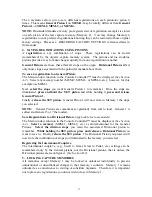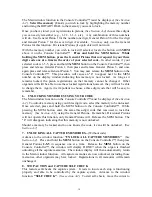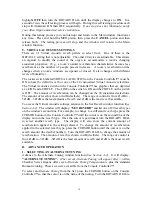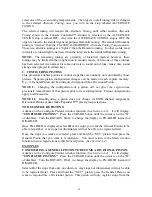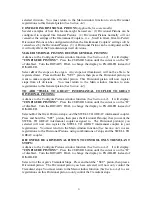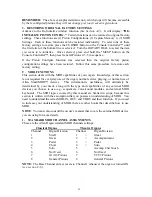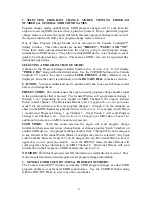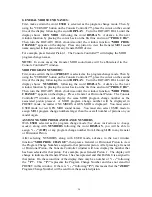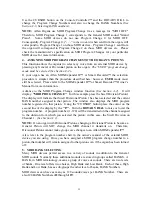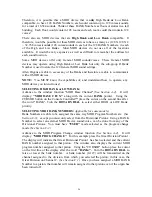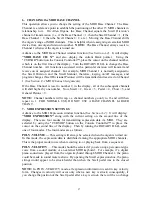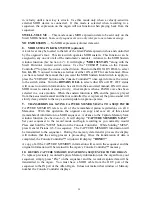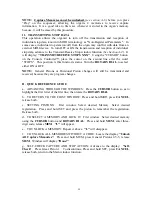
27
6. CHANGING the MIDI BASE CHANNEL
This operation allows you to change the setting of the MIDI Base Channel. The Base
Channel is a reference point to establish the positioning of the other 15 MIDI channels in
relationship to it. On Allen Organs, the Base Channel equals the Swell Division’s
channel of transmission (i.e., if the Base Channel = 1, then the Swell Channel = 1, if the
Base Channel = 2, then the Swell Channel = 2, etc.). Moving the Base Channel shifts
the organ’s range of MIDI channels. This is helpful when reassigning an external MIDI
device from one organ division to another.
NOTE:
The Base Channel always resets to
Channel 1 whenever the organ is turned on.
Advance to the MIDI Base Channel window function
(See Section A-2)
. It will display
"MIDI BASE CH: X"
and also display the current Bank pointer. Using the
"CURSOR" button on the Console Controller™, place the cursor on the channel number,
which is on the first line of the display. Turn the ROTARY DIAL to change the Base
Channel number. All functions associated with a particular division will transmit and
receive on its assigned channel. For example, MIDI Channel 1 is normally assigned to
the Swell Division and the Swell Manual; therefore, keying on/off messages, and
program changes (Swell Divisional Pistons) will be transmitted and received on Channel
1 (
See Section C-1 MIDI Channel Assignments
).
If the Base Channel is reset to number 2, in the display, all of the subsequent channels
will shift higher by one number. Now, Swell = 2, Great = 3, Pedal = 4, Choir = 5, and
General Pistons = 9.
NOTE:
Channel numbers will wrap, i.e. channel numbers go only to 16 and will then
repeat to 1. FOR NORMAL USE, DO NOT USE A BASE CHANNEL LARGER
THAN 9.
7. MIDI EXPRESSION SETTINGS
Advance to the MIDI Expression window function
(See Section A-2)
. It will display:
"MIDI EXPRESSION"
along with the current setting on the second line of the
display. There are four modes for transmitting expression data via MIDI. They are
selected by using the "CURSOR"
button on the Console Controller™ to place the
cursor on the second line of the display. Then by turning the ROTARY DIAL
select
one of four modes. The four modes are as follows...
POLY-VOLUME —
This setting will always be selected when the organ is turned on.
In this mode, the expression data is distributed among the appropriate MIDI channels.
This is the proper mode to use when recording to, or playing back from, a sequencer.
POLY-VELOCITY
— This mode should be selected if you are using a percussion-type
voice from a sound module or an external MIDI keyboard. For example, if a digital
piano sound were played from the organ keyboard through MIDI Channel 1, the piano
could be made to sound more realistic. By opening the Swell expression shoe, the piano
strings would appear to be struck harder than when the Swell pedal was in the closed
position.
NOTE:
In POLY-VELOCITY mode, all expression information is sent in key velocity
form. Changes in velocity will occur only when a new key is struck; consequently, if
you change the position of the Swell pedal after a key is struck, there will be no change





